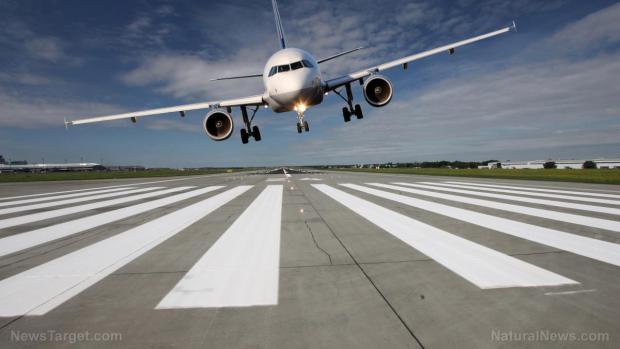
Breaking News
 Scientists unlock 30-year mystery: Rare micronutrient holds key to brain health and cancer defense
Scientists unlock 30-year mystery: Rare micronutrient holds key to brain health and cancer defense
 The Secrets Behind Matt Odell's Bitcoin Empire
The Secrets Behind Matt Odell's Bitcoin Empire
 The Death Of The American Dream: How The Economy Was Ruined For A Whole Generation
The Death Of The American Dream: How The Economy Was Ruined For A Whole Generation
 Breaking new ground: How 5G's rapid rollout threatens flight safety
Breaking new ground: How 5G's rapid rollout threatens flight safety
Top Tech News
 Video Games At 30,000 Feet? Starlink's Airline Rollout Is Making It Reality
Video Games At 30,000 Feet? Starlink's Airline Rollout Is Making It Reality
 Automating Pregnancy through Robot Surrogates
Automating Pregnancy through Robot Surrogates
 SpaceX launches Space Force's X-37B space plane on 8th mystery mission (video)
SpaceX launches Space Force's X-37B space plane on 8th mystery mission (video)
 This New Bionic Knee Is Changing the Game for Lower Leg Amputees
This New Bionic Knee Is Changing the Game for Lower Leg Amputees
 Grok 4 Vending Machine Win, Stealth Grok 4 coding Leading to Possible AGI with Grok 5
Grok 4 Vending Machine Win, Stealth Grok 4 coding Leading to Possible AGI with Grok 5
 Venus Aerospace Hypersonic Engine Breakthroughs
Venus Aerospace Hypersonic Engine Breakthroughs
 Chinese Scientists Produce 'Impossible' Steel to Line Nuclear Fusion Reactors in Major Break
Chinese Scientists Produce 'Impossible' Steel to Line Nuclear Fusion Reactors in Major Break
 1,000 miles: EV range world record demolished ... by a pickup truck
1,000 miles: EV range world record demolished ... by a pickup truck
 Fermented Stevia Extract Kills Pancreatic Cancer Cells In Lab Tests
Fermented Stevia Extract Kills Pancreatic Cancer Cells In Lab Tests
Breaking new ground: How 5G's rapid rollout threatens flight safety

• 5G expansion sparks air safety crisis, new math solution offers lifeline.
• A global aviation-industry gamble: Fast internet vs. flight safety risks.
• Radio altimeter interference threatens takeoffs, landings in poor weather.
• Exclusion zones shaped by stochastic geometry optimize radio wave interference.
• Researchers urge informed policy-making to prioritize coexistence of 5G and aviation.
When the Federal Aviation Administration (FAA) and airlines like United raised alarms in early 2025 about deploying 5G networks near airports, the warnings struck a nerve with public safety advocates. The heart of the conflict? Concerns that the ultra-high-frequency 5G signals threaten the accuracy of aircraft radio altimeters—critical instruments for measuring a plane's altitude during takeoffs, landings and low-visibility flights. The rollout risked grounding planes and stranding travelers. Now, researchers at Saudi Arabia's King Abdullah University of Science and Technology (KAUST) have offered a mathematical breakthrough to strike a balance, blending aviation safety with telecom innovation.

 3D printing set to slash nuclear plant build times & costs
3D printing set to slash nuclear plant build times & costs

